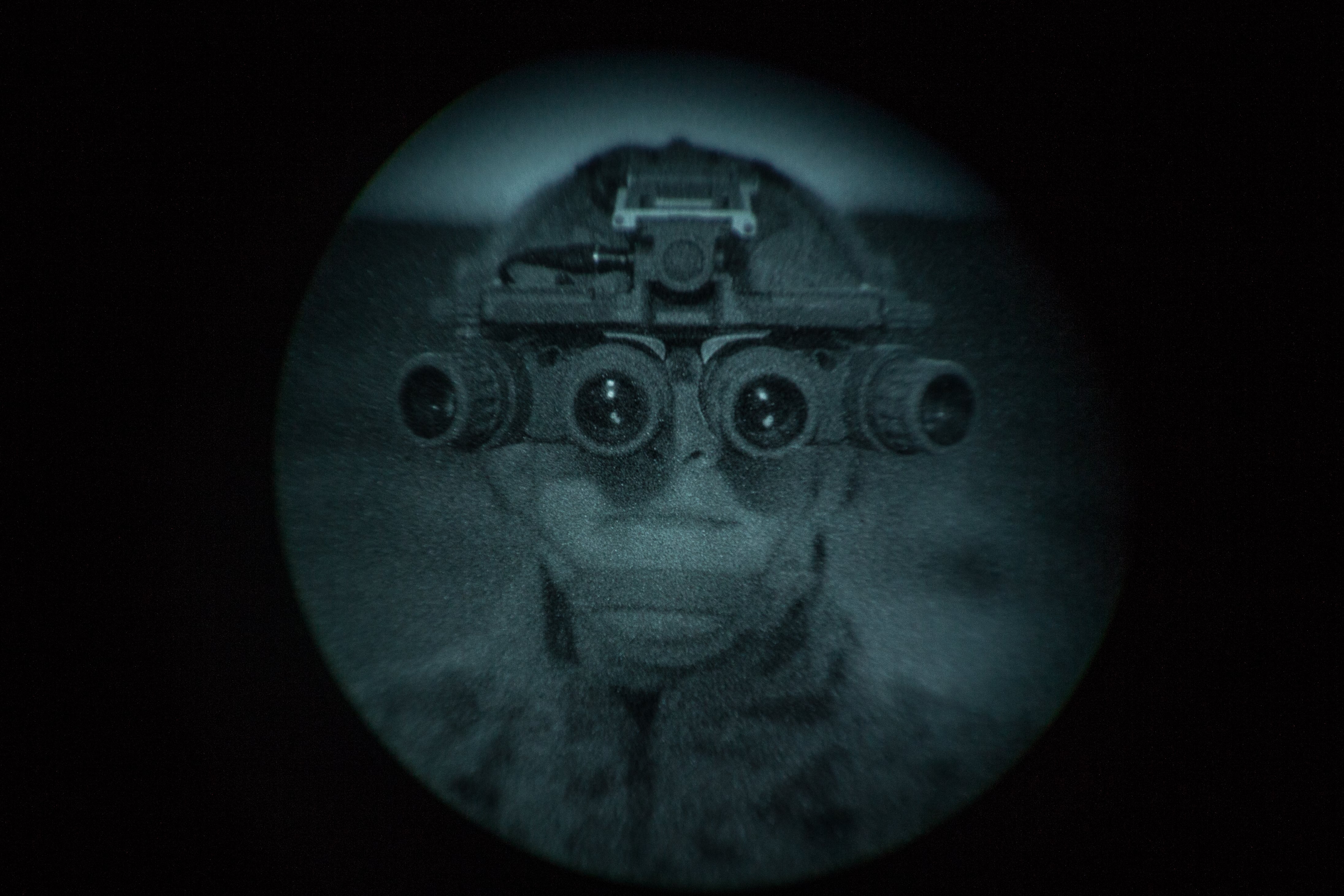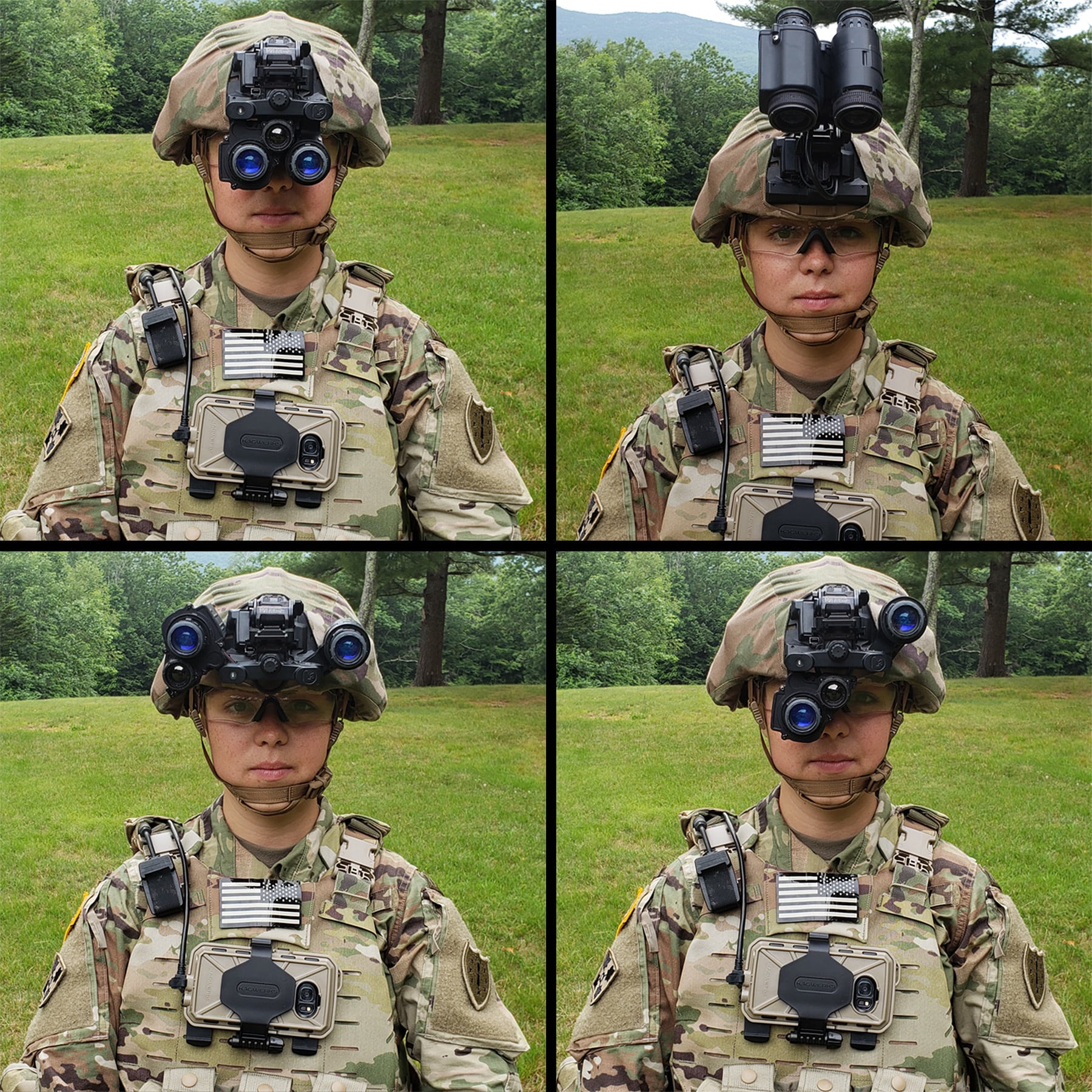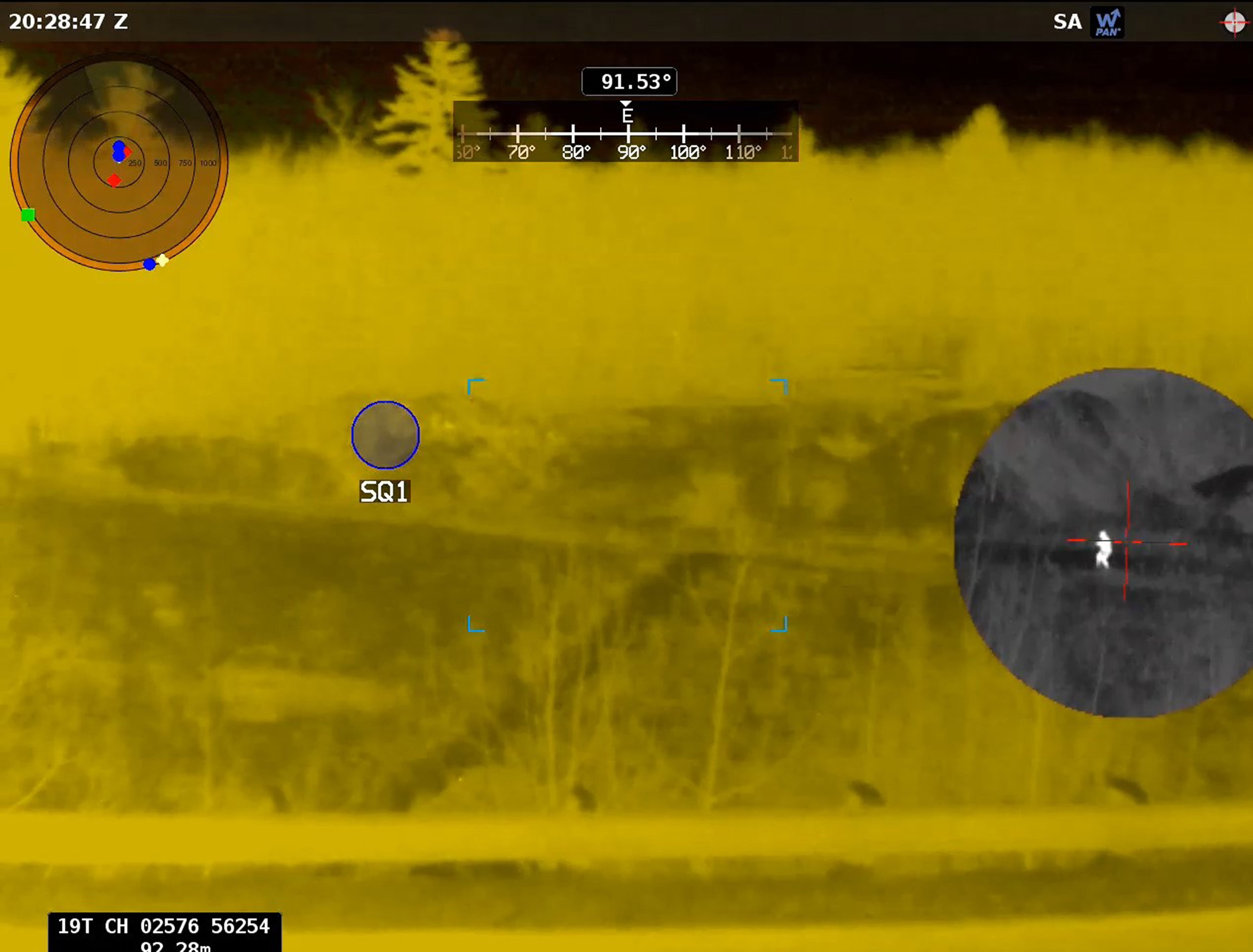The Army’s most advanced night vision goggle is in the hands of soldiers at the 2nd Brigade Combat Team, 1st Infantry Division.
The Enhanced Night Vision Goggle-Binocular delivers a rapid target acquisition capability that increases both finding and shooting the target. There’s no more green glow, now users will see a white phosphorus contrast and have thermal and day/night optic in the binocular vision.
And data from location of friendly troops to wayfinding points for navigation can be displayed in view, keeping the soldier’s head up while patrolling.
RELATED

Brig. Gen. Dave Hodne told reporters in a media roundtable discussion Wednesday that what happens next will help the Army at all levels.
That’s because the soldiers of the “Dagger Brigade” will be the first to use the device beyond testing and at scale from the squad to platoon to company and battalion level.
With so many advanced sets on the heads of so many soldiers, leaders and researchers can more easily gauge how they’re using all of what the capability provides and what that does to the proficiency of the squad and higher-level unit performance.

Hodne spoke with reporters alongside Brig. Gen. Anthony Potts, head of Program Executive Office-Soldier, Sgt. Maj. of the Army Michael Grinston and the Command Sgt. Maj. Michael Crosby.
All of those involved and others previously interviewed by Army Times about the device have emphasized soldier feedback in developing, and fielding, the new night vision.
Potts said Wednesday that having ways in which soldiers could say, “here’s how you make it better,” has informed changes to the device.
A small but important change he noted in a previous interview was the ability to flip the goggle lenses to the side rather than only above the helmet. That’s an assist for any soldier or Marine who’s rammed the device into the doorframe of a vehicle.
That option also allows the soldier to shift from binocular to monocular mode and keep one naked eye on the scene.
Grinston added some nuance to the “soldier feedback” description, noting that he’d given plenty of feedback as a soldier in his 31 years of service, but that new processes have changed how that’s received and acted upon.
“The soldier says, this is what I’d like to see and then a week later you’ve got the button and it works,” Grinston said.
That sped-up feedback loop differs widely from past experiments where years would go by between small equipment changes or when developers would field a piece of equipment that soldiers didn’t like upon arrival and it sat unused or underused for the rest of its lifecycle.
The device has had multiple “soldier touch points” in the past two years.
An early touchpoint included Marines from The Basic School at Quantico, Virginia; 1st BCT, 82nd Airborne Division and Bravo Company, 2nd Battalion, 504th Parachute Infantry Regiment.
In that event, troops wore the ENVG-B while moving through an obstacle course and tunnel complex and conducted reflexive fires using rapid target acquisition, or RTA.

Hodne, who heads both the Infantry School and the Army’s Soldier Lethality Cross Functional Team, said last year that a limited test of shooters found those using the RTA in the new goggle saw 100 percent improvement on M4 carbine qualification, 300 percent improvement on detecting targets and 30 to 50 percent decrease in time to employ their weapon.
Staff Sgt. Tanner Trapp said the FWS-I, or Family of Weapons Sights-Individual, would make soldiers and squads more lethal, according to a PEO Soldier release.
The FWS-I wirelessly transmits an image captured from a reticle mounted on the M4 to the goggle. This lets users see the carbine’s aim point in the goggle view.
That allows shooters to see and fire on targets from the hip or around corners or from behind barricades. The vision technology means the users can see through smoke and dust, which previously obscured the sight picture in night vision devices.
“That thing is phenomenal,” Trapp said. “The capability it provides is ridiculous.”
Army officials previously told Army Times that 10,000 units were expected to field by 2021 and that the Marine Corps would receive 3,100 units in the same time period.
Officials in the most recent interview said the current fielding would inform Army leadership on how many goggles would field to which units in the coming year.
Todd South has written about crime, courts, government and the military for multiple publications since 2004 and was named a 2014 Pulitzer finalist for a co-written project on witness intimidation. Todd is a Marine veteran of the Iraq War.



